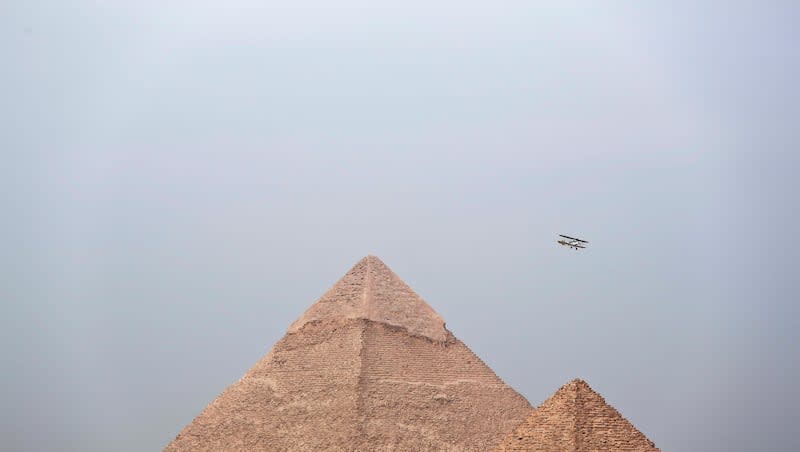Archaeologists say they’ve discovered an ancient river that helped Egyptians build the pyramids

A new research paper published in the journal Communications Earth & Environment claims that ancient branches of the Nile River once created river harbors near Egypt’s largest pyramid field.
The research team named this now-gone river branch the Ahramat branch, and said it used to run along the foothills of many of the pyramids.
The research team was able to locate where the Ahramat branch once ran by using satellite imaging and analyzing sediment cores, CNN reports. By doing this, they discovered that the extinct river branch was 40 miles long.
Using this new evidence, the team suggests in their paper that the river branch played a pivotal role in building the pyramids, acting as a waterway for construction workers.
In a statement, Eman Ghoneim, lead researcher for the new study and a professor of earth and ocean sciences at the University of North Carolina Wilmington, explained that many researchers “are aware that the Egyptians must have used a waterway to build their enormous monuments, like the pyramids and valley temples, but nobody was certain of the location, the shape, the size, or proximity of this mega waterway to the actual pyramids site. Our research offers the first map of one of the main ancient branches of the Nile at such a large scale and links it with the largest pyramid fields of Egypt.”
How the Nile River has changed
Images in the new research paper show that the Nile’s Ahramat river branch ran parallel to the modern day Nile River and directly next to the following pyramids: Giza Pyramids, Abusir Pyramids, Saqqara Pyramids, Dahshur Pyramids and Lisht Pyramids.
🏜️The pyramids of the Western desert in #Egypt were built alongside a now extinct branch of the Nile River named as the Ahramat Branch and identified using a combination of radar satellite imagery, geophysical data and deep soil coring.
🔗https://t.co/sL3uRtYn0q pic.twitter.com/Ci7hX7tLef— Communications Earth & Environment (@CommsEarth) May 16, 2024
According to the BBC, the ancient part of the Nile River is now buried under farmlands and desert. Thousands of years ago, it went dry due to a severe drought and it was covered by sand from sandstorms.
The pyramids that now stand alongside what would have been the Ahramat river branch were built between 4,700 and 3,700 years ago, per the BBC.
Ghoneim said that “our research shows that many of the pyramids in the study area have (a) causeway, a ceremonial raised walkway, that runs perpendicular to the course of the Ahramat Branch and terminates directly on its riverbank,” per CNN.
The research paper further explains that this ancient part of the Nile River was very active during the construction of the pyramids and connected cities and cultures in the region.
The research team suggests in their paper that “this extinct Nile branch can provide a more refined idea of where ancient settlements were possibly located in relation to it and prevent them from being lost to rapid urbanization.”

